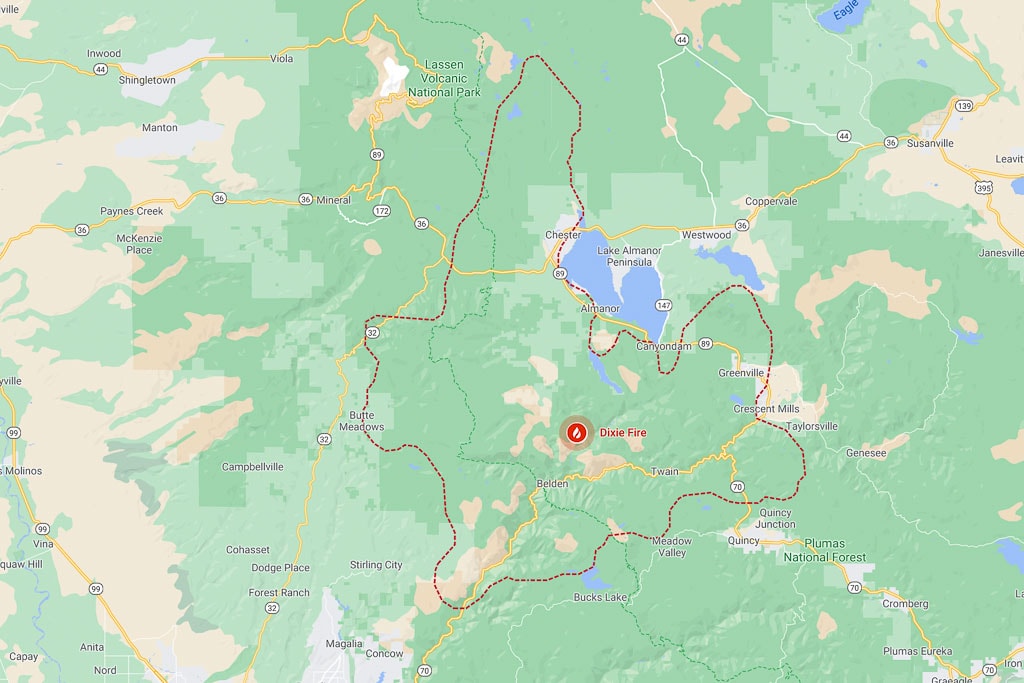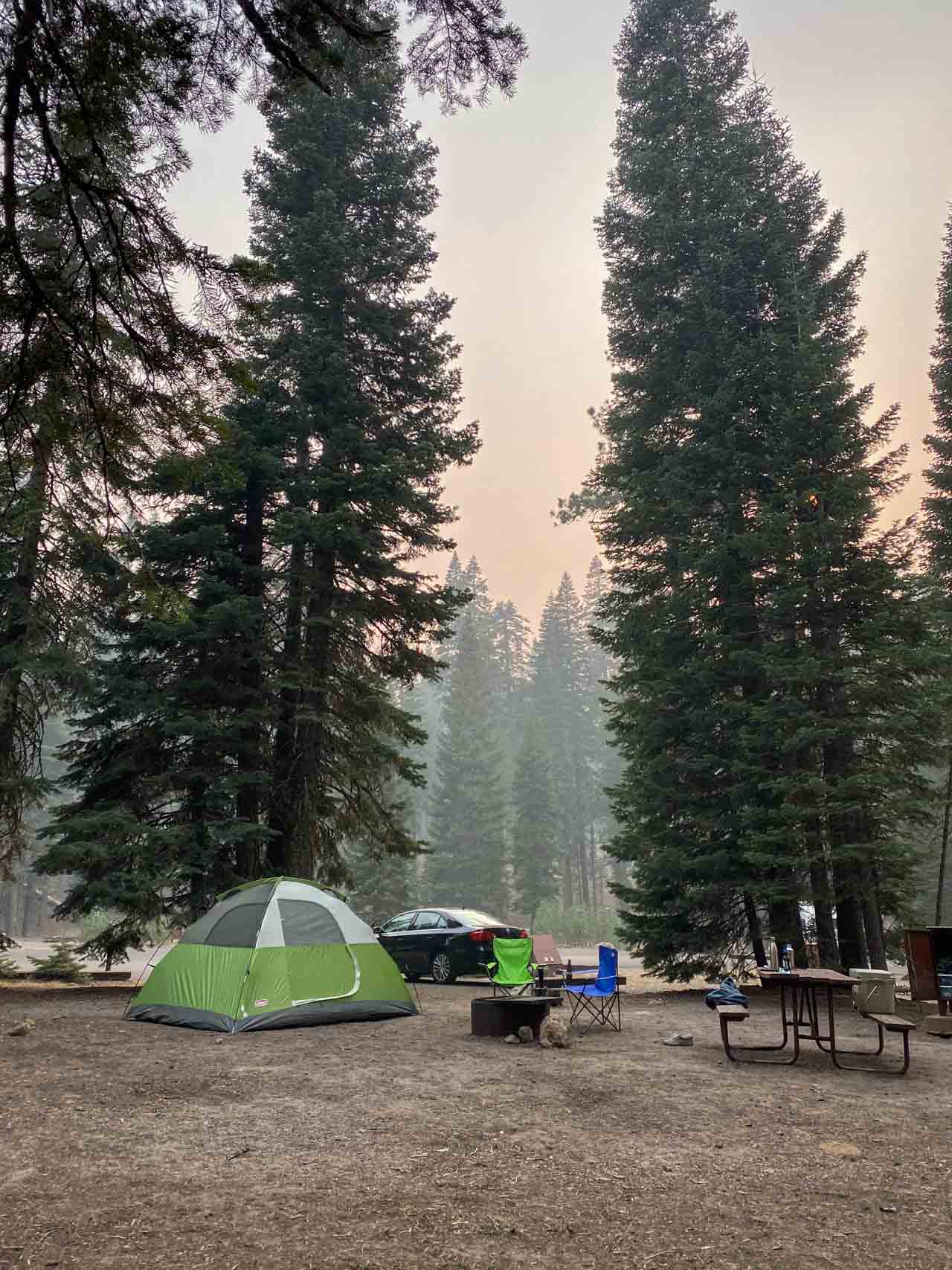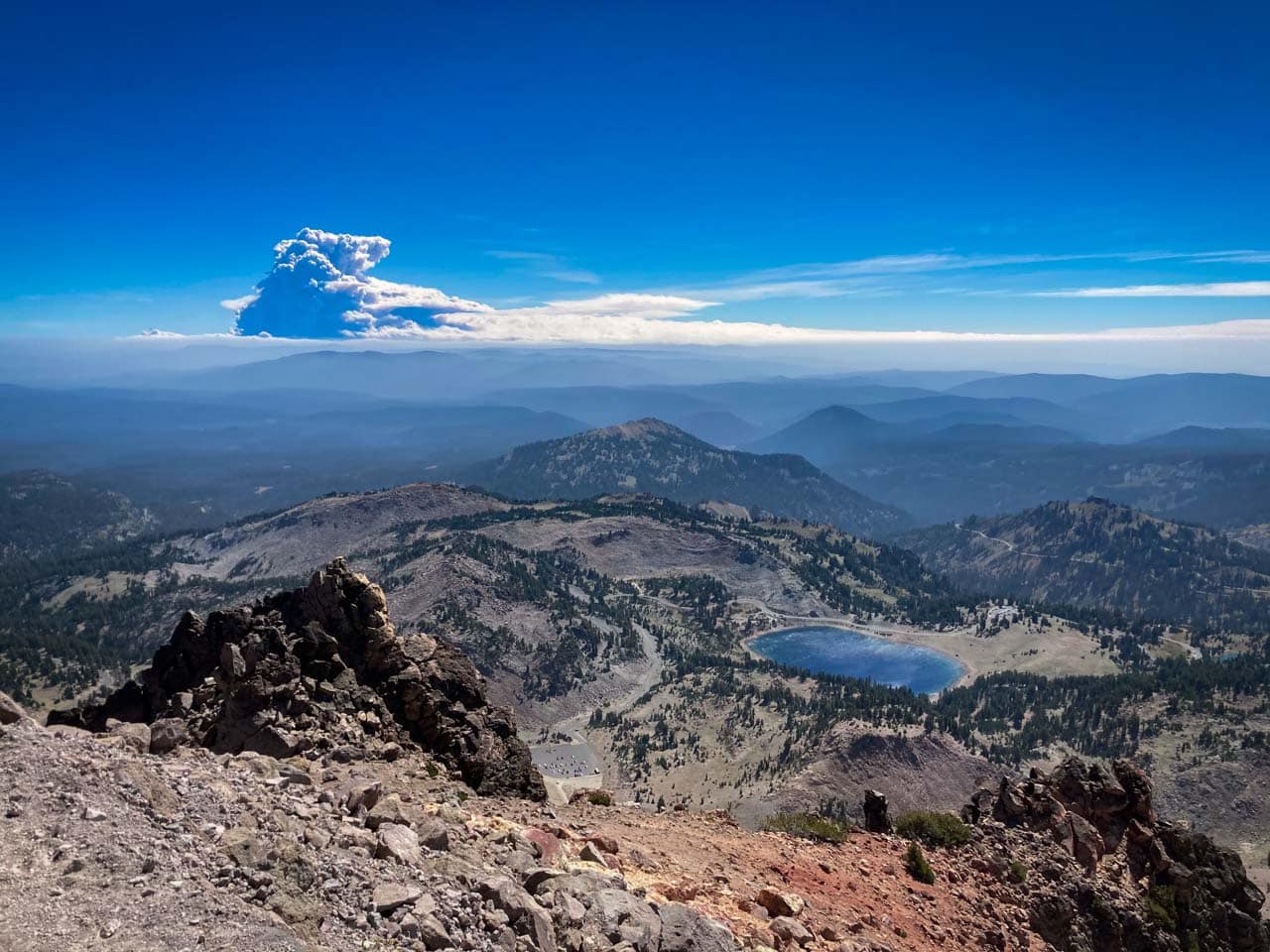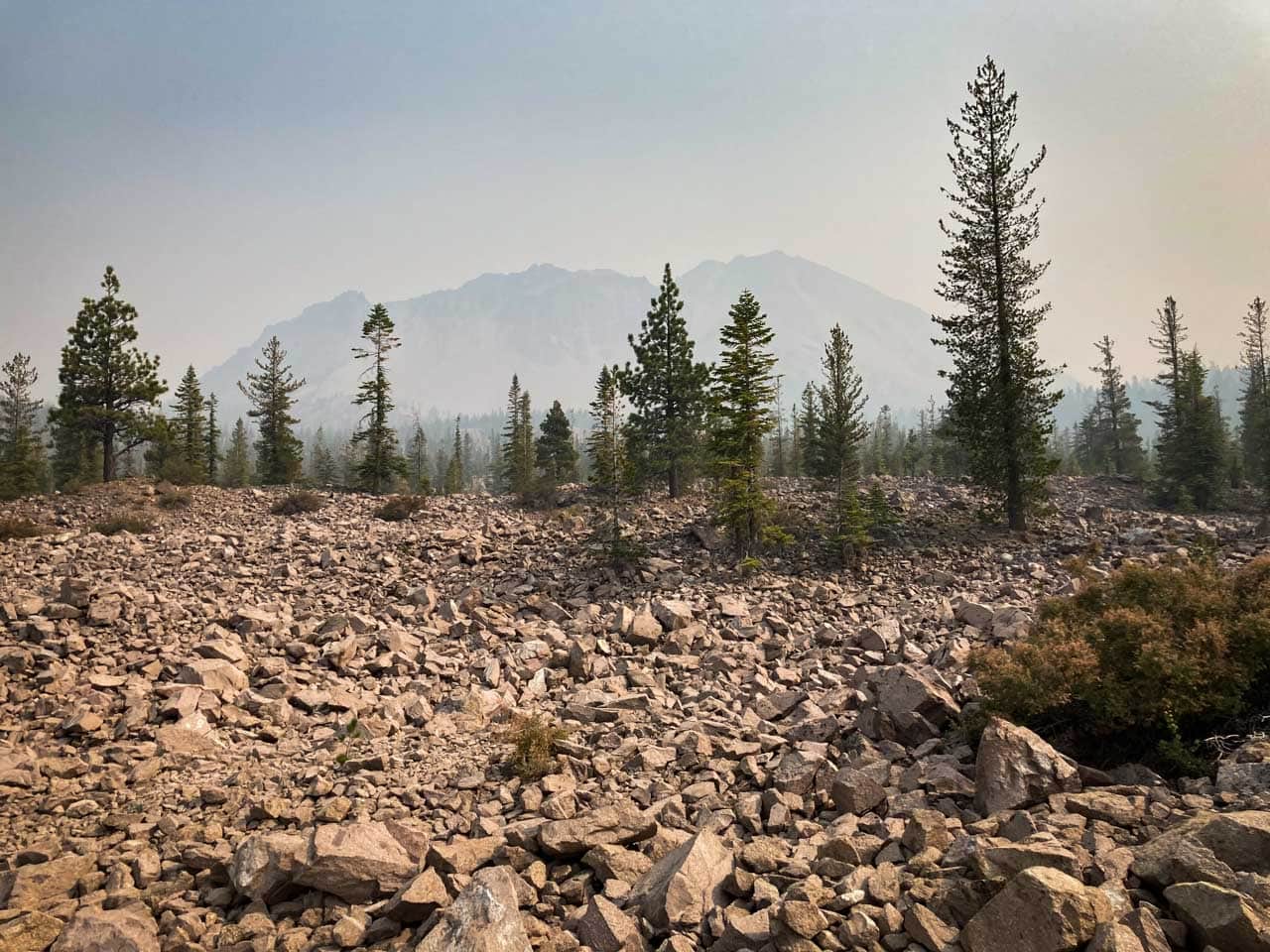California’s largest wildfire of the year, and the sixth-largest in the state’s history, the Dixie Fire has reached Lassen Volcanic National Park, prompting the National Park Service to close the entire park to all use.
Having been burning for three weeks, this massive fire is active in four Northern California counties: Plumas, Butte, Lassen and Tehama.
Strong winds and low humidity keep fueling extreme fire behavior, which caused the fire to explode in size on the night of Wednesday to Thursday, August 4-5.
Entire Lassen Volcanic National Park Closed to All Use Due to Dixie Fire

The Dixie Fire grew 50,000 acres overnight, swallowing the mountain town of Greenville almost entirely on Wednesday night, August 4. The Dixie Fire now encompasses 332,502 acres with 35% containment.
For comparison, Lassen Volcanic National Park, which the fire has now entered, is “only” 106,452 acres.
Lassen Volcanic National Park is no stranger to catastrophic natural events. Home to hydrothermal areas comparable to Yellowstone, including fumaroles, mud pots and cinder comes, the park is a pretty volcanically active place.
The park’s centerpiece and namesake is Lassen Peak, one of the world’s largest plug dome volcanoes. Its last eruption was as recent as 1914-1917, with the most powerful explosion taking place in 1915 and devastating the surrounding areas.
The eruption of Lassen Peak is one of only two volcanic eruptions to occur in the contiguous United States in the 20th century—the other one was Mount St. Helens in 1980.
However destructive volcanic eruptions are, they are arguably much less dangerous than the California wildfires we’ve seen in recent years.
I can personally attest to that. I was visiting Lassen Volcanic National Park for what I intended to be a full week last year in September, before having to cut my trip short due to nearby wildfires, heavy smoke and seriously unhealthy air conditions. Hiking was impossible and there were no views whatsoever, anywhere.
The drive back to and through Oregon was unlike anything I’d ever seen before, with huge areas of forests, farmlands and towns completely burned to the ground.

This year, once again, fires are burning hundreds of thousands, eventually perhaps millions, of acres of some of the California’s most precious and pristine landscapes.
Now, Lassen Volcanic National Park appears to be in dire straits, too. The giant Dixie Fire has officially reached the eastern boundary of the park.
In response to this potentially disastrous situation, the National Park Service decided to close Lassen Volcanic National Park to all use. This is to allow access to firefighters.
“The temporary closure ensures firefighters have unimpeded access to all areas of the park. The park’s current priorities are to ensure the immediate evacuation of visitors and to protect facilities along the park highway and in the Manzanita Lake and Mineral Headquarters areas.”
Lassen Volcanic National Park Superintendent Jim Richardson

“For this morning’s briefing, the control objective was to keep [the Dixie Fire] out of the park. Everything that we can do to keep it inside the box we are trying to keep it in is being done. We’re fighting this fire as aggressively as we can.”
Mitch Matlow, Cal Fire’s Public Information Officer for the Dixie Incident

“We’re anticipating a dire situation. We have strike teams in the area, but conditions are going to get worse. The fire is moving so fast and so hot, it’s an extremely dangerous situation.”
Kevin Sweeney, Lassen Volcanic National Park Public Affairs Officer
You can find more information about the Dixie Fire in Lassen Volcanic National Park here:
